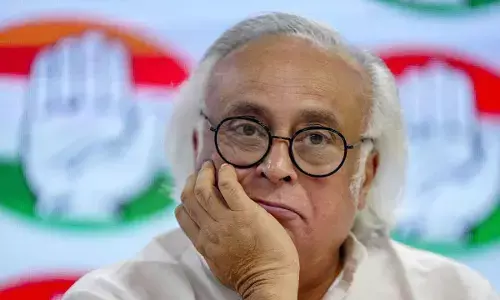ISRO's SSLV, Skyroot, Agnikul eye share in satellite biz

ISRO's latest satellite launch vehicle ' SSLV' is the first rocket in its category to be ready for commercialisation with two others, 'Vikram' from Skyroot and 'Agnibaan' from Agnikul Cosmos, expected to vie for market share to place small satellites in orbit.
New Delhi: ISRO's latest satellite launch vehicle ' SSLV' is the first rocket in its category to be ready for commercialisation with two others, 'Vikram' from Skyroot and 'Agnibaan' fromAgnikul Cosmos, expected to vie for market share to place small satellites in orbit.
According to industry estimates, the satellite launch market in India is expected to grow from USD720 million in 2022 to USD3.5 billion by 2033 and small satellites are likely to be the most preferred modes for a number of applications ranging from providing internet connectivity to earth observation. Space start-ups such as Pixxel and Satsure have already announced plans to have constellations of small satellites for the range of services they plan to offer and Indian launch vehicles will vie to be the preferred rockets to place these satellites in orbit.
"Larger launch vehicles are there, but with a large number of satellites being launched, companies do not want to wait, they want to launch a satellite as soon as they can and small vehicles are tailor made for them," said Lt Gen A K Bhatt (retd), Director General of Indian Space Association.
Pixxel is also considering using ISRO's launch vehicles to place its hyper-spectral satellites in orbit later this year. "Right now, of the six satellites we are building, three of them will launch with SpaceX and three with ISRO," Pixxel CEO Awais Ahmed said. Bhatt said the Indian National Space Promotion and Authorization Center (IN-SPACe) was also in discussion with various government ministries for having a constellation of small satellites to meet their requirements.
"These satellites will be built by Indian companies and will help create a market for home-grown launch vehicles," he said.
Hyderabad-based Skyroot Aerospace carried out the test of the Stage 2 engine that will power the Vikram-1 rocket it plans to launch later this year. The Stage 2 engine, named Kalam-250, will propel the launch vehicle from atmospheric space into the deep vacuum of outer space.
IIT-Madras incubated Agnikul Cosmos is also expected to launch its orbital rocket Agnibaan next year.
After the launch of the Small Satellite Launch Vehicle (SSLV) on August 16, ISRO Chairman S Somanath announced that the development of the launch vehicle was complete and the rocket was ready to be transferred to the industry for mass production. "We are hoping that this will really help the industries scale their competence and capabilities to build smaller rockets," Somanath said.
On technology transfer, IN-SPACe has started to find out which industry consortium will take it up. They will work with ISRO for the next two years to understand the technology, he said. Somanath said IN-SPACe had organised a one-day interaction with industry players to understand issues that they may have related to technology transfer and how to do it, and expectations from ISRO for them. "It is not just manufacturing technology that we are transferring. We are also transferring the knowledge on how things are done. They need to come inside ISRO and work with us and learn the techniques. We are teaching them how to build the rocket," he said.
"We will look at various criteria, including manufacturing, facilities and financial strength. There will be a technology transfer fee that they will have to pay," Somanath said.








